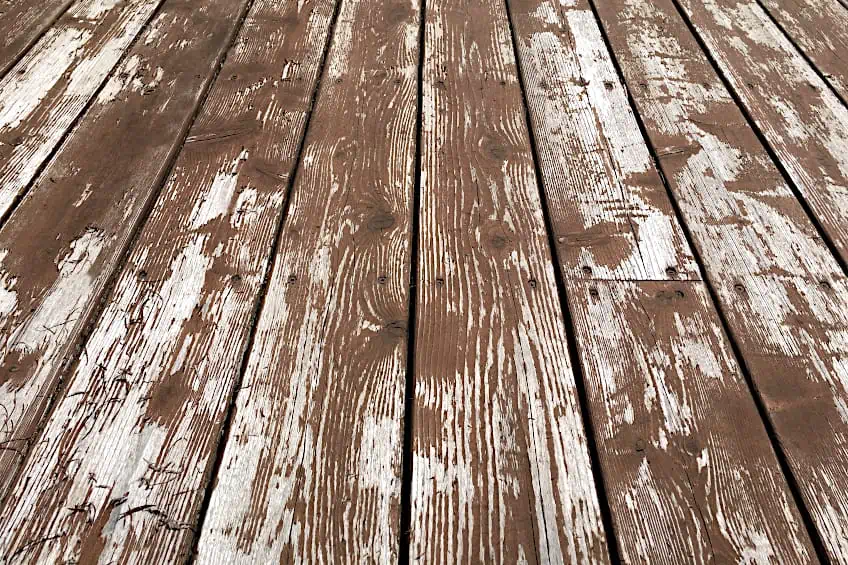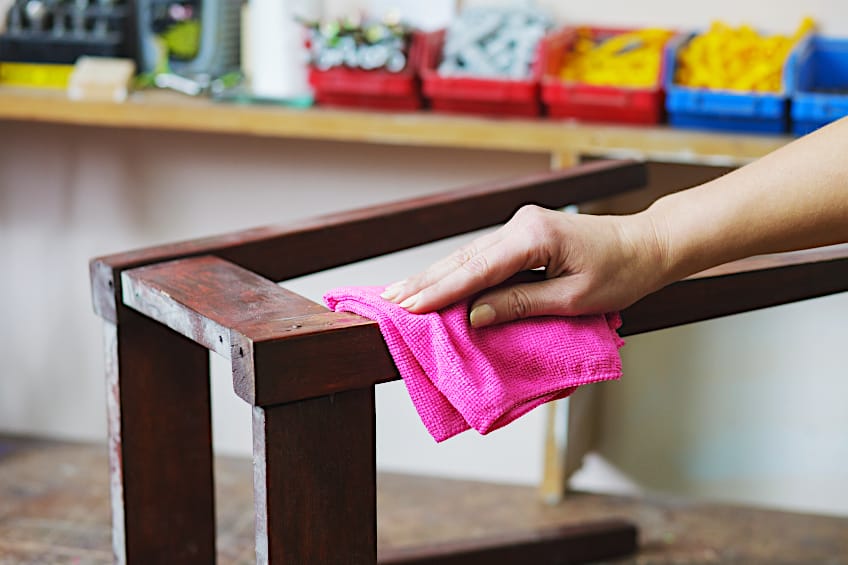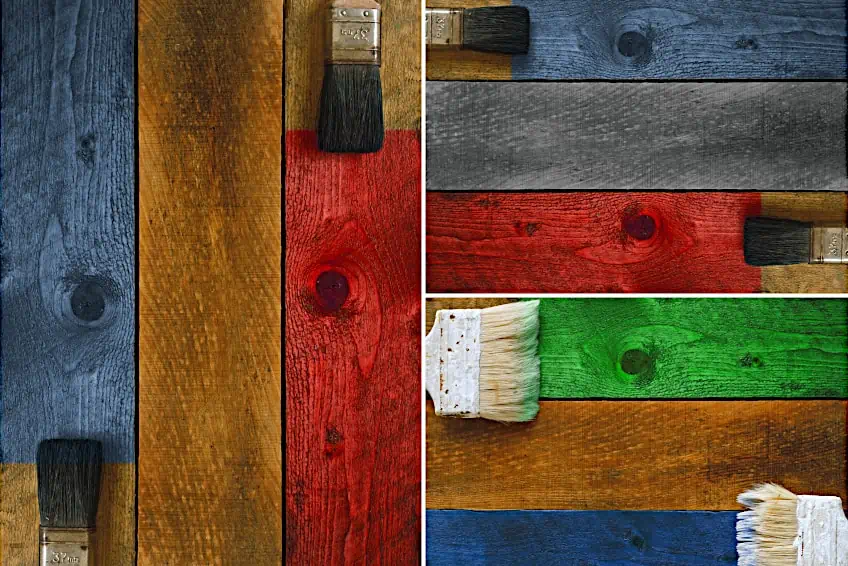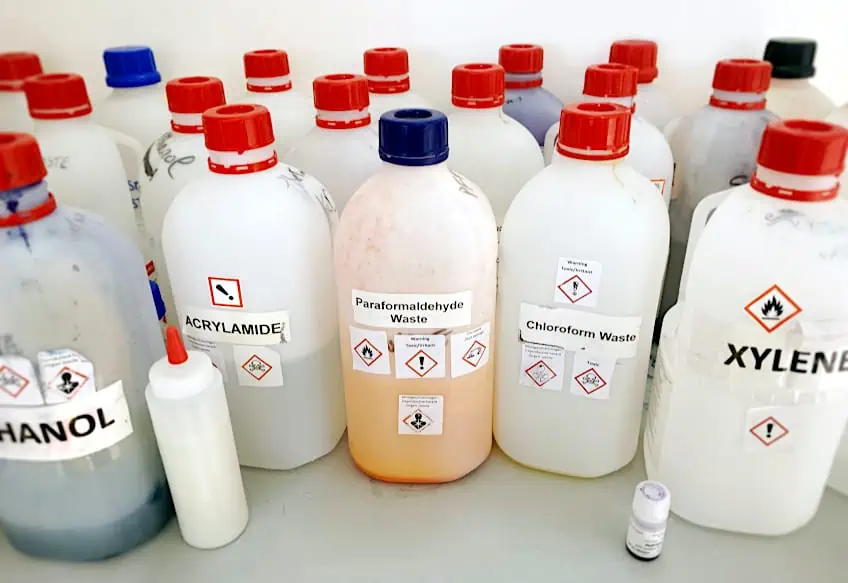Oil vs. Water-Based Stain – How to Choose the Right Wood Finish
This post may contain affiliate links. We may earn a small commission from purchases made through them, at no additional cost to you. You help to support resin-expert.com
Regardless of the type of wood that you have chosen for your next woodworking project, having the right wood stain is extremely important. While there has been an ongoing debate regarding oil vs. water-based stain, we have taken the liberty to provide you with all of the information that you would need. Here, you will learn everything that you will need to know about the difference between water-based and oil-based stain.
Table of Contents
Oil vs. Water-Based Stain
Oil-based and water-based stains have distinct differences along with some similarities. This is why it is very important to know all of the details about your project before choosing one of these stains. Each product features different characteristics and this makes it fairly easy to be able to differentiate these stains.
The main function of wood stain is to change the color of the wood while retaining the beauty of the wood grain. Not only are there aesthetic benefits, but wood stains also add an additional layer of protection from harmful UV rays while also concealing scratches on the surface. In general, water-based stains are easier to use when compared to oil-based products. However, these wood stains do not offer much protection and will never be as durable as oil-based wood stains.
The only similarity between these stains is that they both require thorough prep work before you can apply them to a wooden surface. You could ask the question “Is oil-based stain better than water-based?”. However, we have taken the liberty of providing you with all of the answers right here.
The Characteristics of Oil-Based Stains
Oil-based wood stains work very well on large wood surfaces and other kinds of furniture. However, one of the main disadvantages of this product is that it takes an extended period to dry as it needs to penetrate the wood. When deciding on a water or oil-based stain, you will need to decide if you are more concerned about with peeling and fading or fumes and chemicals. Since oil-based stain seeps deep into the wood, you will never need to worry about peeling. This type of stain can easily be used for outdoor and indoor projects, provided that you are not working with cedar, redwood, or rot-resistant wood.
Keep in mind that one key factor to consider when using oil-based stain is these contain volatile organic compounds (VOCs) which can cause skin and eye irritation, headaches, and respiratory issues.
Composition and Ingredients
When it comes to the manufacturing process of oil-based stains, there is an assortment of components that are used. Among the key ingredients, you will find mineral spirits that are used to maintain viscosity while also making the product easy to apply. Linseed oil is also used and it acts as a binder, it has also been treated with various acids that ensure that the oil does not penetrate too deep into the wood. Other ingredients also include iron oxide pigments, metallic salts, and a thickening agent.
- Easily penetrates the wood
- Cost-effective since only one coat is needed
- Easy to recoat
- Lasts much longer than water-based wood stain
- No prep work is needed with every job
- Oil-based stain is not as readily available these days
- It contains harmful chemicals
- Transparent variants quickly fade with prolonged sun exposure
The Characteristics of Water-Based Stains
Water-based stains are generally looked at as an eco-friendly alternative to their oil-based counterparts. However, the biggest problem with this type of stain is that it struggles to penetrate wood because of its composition and thickness. To get the best out of this product, you will find that a minimum of two coats is needed. Since it cannot penetrate the wood, this type of stain tends to peel, flake, blister, and crack over time.
Water-based stains are available in semi-transparent and opaque stains that cover the natural grains of the wood. If the stain is damaged in any way, you will need to completely sand down the surface and then apply a fresh coat of wood stain. This can become very expensive and tedious, so it is not a viable option for exterior flooring.
Composition and Ingredients
Water-based stains use a combination of water-soluble aniline dyes and water as a solvent. Along with this, some companies also add coalescing agents, color pigment, styrene resin, and acrylic resin. If you are unsure of the type of stain that was used on a particular surface, you can take a cotton ball that was dipped in rubbing alcohol and then rub it onto the surface. If the stain starts to lighten, then it is water-based.
- Quick drying time
- Low odor
- Much more environmentally friendly
- Easy to clean
- Less color intensity
- Less durability
- More coats are needed
- Fewer color options
A Direct Comparison of Water and Oil-Based Wood Stains
As we have already established, there is a huge difference between water-based and oil-based stain products. However, there are more facets that ought to be assessed before you can make a decision. It will be much easier for you to choose a product before you start your project if you have a clear understanding of what water or oil-based stain does.
Performance and Durability
The improved durability of an oil-based stain represents one of its most significant advantages. Oil-based stains permeate the wood far more deeply than water-based stains. This is because oil molecules tend to be significantly smaller than their water-based counterparts. An oil-based stain will sink straight into the wood grain and adhere much better. As expected, an oil-based stain will keep its shape over time, fading instead of flaking. Water-based wood stains tend to aggressively peel over time. They can also flake and peel if you use too much of it at the start. Therefore, you won’t have to apply another layer of oil-based stains as frequently as you would with a water-based option. The adherence to an oil-based pigment additionally renders it easier to renew.
Whenever wood is exposed to dampness and water, the natural wood fibers in the wood grain expand and rise. This implies that utilizing a water-based stain may cause the grain of your wood product to rise. If the water-based stain elevates the wood grain, the entire project will be ruined.
This suggests that you will require additional time to prepare. If you intend to use a water-based product, you must first “bury” the wood grain. It’s necessary to purposefully dampen the wood to bring out the wood grain, then you will need to sand the surface before applying the wood stain.
Water-based stains are much more UV-resistant. This implies that water-based stains will hold their color for a longer amount of time. Furthermore, water-based stains do not penetrate the wood as extensively, allowing for plenty of air circulation when applied. Water will not accumulate as quickly since the wood has room to breathe.
Only once the oil stain has fully cured will it be able to repel water. However, oil-based stains take quite a while to cure. When you apply oil-based wood stains, they can retain water and cause rot over time. Oil-based stains repel water and mildew better after application.
Color Options and Intensity
Water-based stains are particularly well-known for their diverse color palette. On the market, there is a wide range of colors to choose from. Meanwhile, finding the perfect shade with an oil-based stain may be more difficult. This might make all the distinction when it comes to styling your home’s exterior or interior. Hues in interior design are frequently expected to stay within an identical group of hues and tones.
Keep in mind that oil-based stains are much more intense in color, so the options that are available are incredibly vibrant and this makes them ideal for outdoor use. If you are more interested in staining interior wood pieces, then you are better off using water-based stain.
Drying Time and Ease of Cleanup
When it comes to general versatility, water-based stains remain the obvious winner. This is mostly due to the fact that a water-based wood stain is very easy to remove. A water-based wood stain binder is simply more water. In a nutshell, all you would need to immediately correct an error is some basic soap and water.
One of the main benefits of water-based stains is that these will not leave an unpleasant odor. Because water is the main component, there will be no chemical fumes. Also since oil-based stains infiltrate the surface of the wood, the pungent smell produced by these will permeate the wood and linger for longer.
Given that oil-based stains generally have a linseed oil base that serves as their binder, oil-based wood stains are going to require a longer time to dry. The extended drying period of an oil-based product might simplify your selection. A water-based wood stain, for instance, will dry in a matter of hours, according to experts. In the meantime, oil-based stains may require an entire day to dry. In fact, you have to wait longer for an oil-based stain to fully cure.
Environmental Impact
If you want to help the environment, choose water-based wood stains. Firstly, they do not necessitate the use of sophisticated chemicals to clear up an error or an accident. Oil-based wood stains would need far more than soap washing and water. Furthermore, water-based stains do not emit harmful fumes. Oil-based wood stains maintain a pungent smell and emit VOCs.
Oil-based wood stains contain chemicals that include volatile organic compounds (VOC’s). These VOCs have a tendency to cause adverse health effects such as dizziness, nausea, and difficulty breathing. The VOCs can be quite corrosive, which is not good for the environment. Oil-based stains are indeed combustible, as most companies state on the packaging.
Recommended Use for Oil-Based and Water-Based Stains
Certain projects are going to benefit the most when using an oil-based stain. The oil alternative is perfect for any wide surface area because it takes longer to cure. This allows you ample time to cover the entire project equally. Oil-based wood stains have a lingering odor. This implies you should avoid interior work unless you can completely ventilate the area.
Most people recommend choosing oil-based stains for exterior jobs since they are more durable. Additionally, they will keep unwanted odors and fumes inside. Water-based stains are also non-flammable, making them safer to use indoors. However, you will need to ensure that you are working in a ventilated workspace.
Surface and Material Recommendations
We have determined that water-based wood stains are perfect for modest projects and interior use. This is because this stain dries much too rapidly for larger jobs. However, they will not keep unwanted odors and fumes inside. Water-based stains are also non-flammable, which makes them safe to use on interior projects.
Depending on the conditions, either wood stain can be suitable for hardwood floors. A water-based stain, for instance, would be less resilient and dry too rapidly, necessitating additional effort. On the other hand, you’d be able to walk over the hardwood floor much sooner due to the quick-drying stain. There will be no negative health consequences.
Ideal Applications
For furniture tasks, an oil-based product is recommended. Since furniture is often fairly big, it will take some time to completely cover all of the wood. However, furniture can also be coated outside, where the dangerous, foul-smelling VOCs will not enter your home for months. When ready, the furniture may be moved inside.
A water-based wood stain is ideal for kitchen cabinets. More importantly, using water-based stains means that you can avoid using anything flammable in the kitchen, such as oil-based wood stains.
Characteristics to Evaluate When Selecting Water or Oil-Based Stains
Oil vs. water-based stain, what could be considered as the superior product for your woodworking project? There are a variety of important factors that need to be considered before choosing the type of wood stain for your next project. As we have established, water-based wood stain is great for interior use, while oil-based stains are great for exterior use. However, there are other factors that need to be considered before you can make your decision.
Cost
The reality is that we live in a world that is dictated by money, and this means that the cost of the product should be considered. Water-based stain products are much more expensive compared to oil-based products. For instance, you could easily pay an additional $0.50 to $1.00 per square foot for a water-based stain. While you could think that you are getting what you are paying for, this is not the case since oil-based stains often provide a more vibrant and durable finish.
Smell
Unfortunately, no matter what type of stain you use, you will end up with a strong odor. You are likely wondering, “Does water-based stain smell?”. Yes, it does and it is a characteristic of deploying a polyurethane finish . While oil-based stain products emit a much more pungent odor due to high levels of VOCs, it is natural to believe that water-based stain products are the best choice if you are environmentally conscious. However, you will be using it more often than the oil-based counterpart and this essentially balances the environmental impact.
Result
When considering an oil vs. water-based stain, the final result is what matters the most. Oil-based stains usually have a darker hue, which will continue to darken over time, whereas water-based stain products have softer colors as they do not penetrate the wood as much. However, water-based stains are non-flammable and are also mildew and mold resistant.
With so many wood stain options available today, both oil-based and water-based wood stain products have their place. For external use with a durable finish, oil-based stains are the best. However, for interior use, it is best to use a water-based wood stain, as it dries very quickly. The only thing left for you to do now is to choose your next product and the wood stain that you would like to use. Remember, each product needs to be applied a bit differently and as long as you are mindful of the prep work, the result will be great. We wish you the best of luck with your next project!
Frequently Asked Questions
What Is the Ideal Way to Clean Up Oil-Based Wood Stain?
The best way to clean up oil-based wood stains is to use mineral spirits. Mineral spirits will lift the oil-based stain from the surface and the process is very easy, as all you will need is a lint-free cloth. If you do not have mineral spirits, WD-40 is also a great alternative to cleaning up this type of wood stain.
Is Oil-Based Stain Better Than Water-Based Products?
This depends on the application. Water-based stains are great for interior use on furniture, such as cabinets and even doors. However, if you are looking for a much more durable finish, you will be much better off using an oil-based stain product, especially if it is outdoors.
Does Water-Based Stain Smell Bad?
Contrary to popular belief, water-based stain does emit a foul-smelling odor despite having significantly fewer VOCs. However, the smell is not so bad that you cannot use it indoors, but it is there nonetheless.













